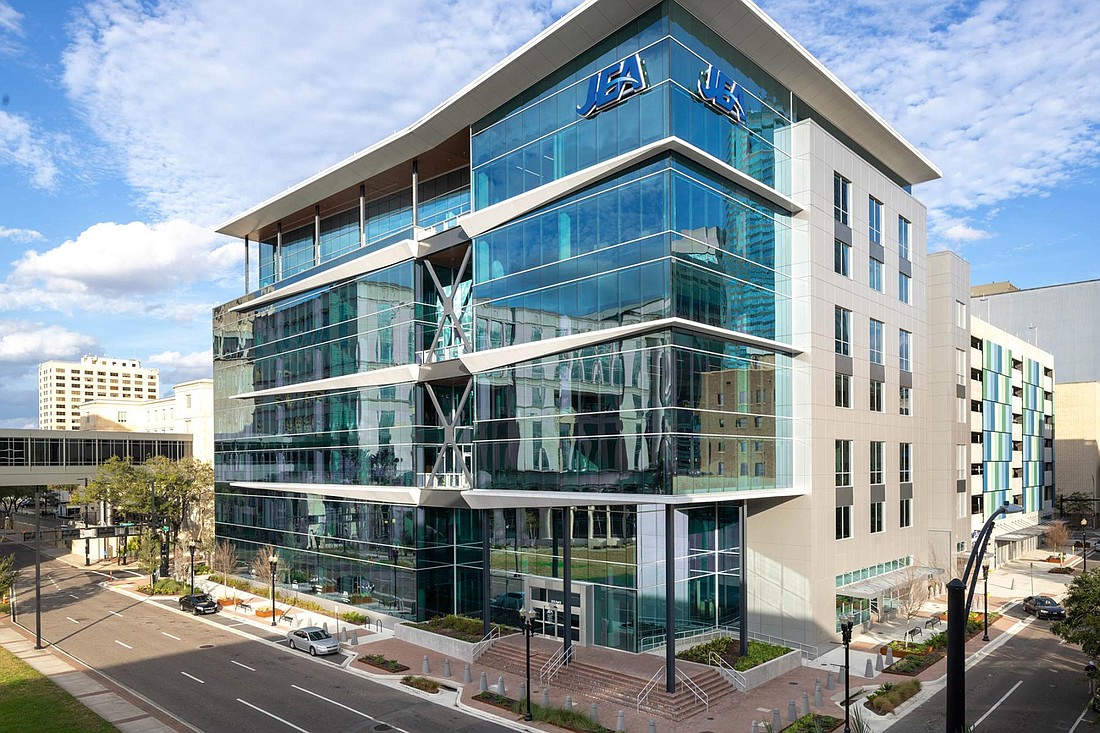
Armed with a newly delivered report saying it would be more cost-effective for JEA to borrow funding to replace aging parts of its infrastructure and equipment than fix them piecemeal style with an expanded workforce, the city-owned utility’s leadership is working on a plan to optimize staff efficiency and invest in its systems.
K3 Strategies LLC of Sarasota, which JEA hired to review its operations and capital expenditures plan, presented its report to the board of the city-owned utility May 27.
The consultants found that JEA’s spending on replacement and renewal of equipment lagged depreciation in recent years, particularly on water and sewer service. In tandem, the utility increased its spending in operations and maintenance 40% over the past two years, with the bulk of that outlay funding personnel.

Kurt Wilson, JEA chief of staff, likened the situation to car ownership. At some point in a vehicle’s life, he said, replacing it is a better value proposition than spending on an increasing number of repairs.
K3 said that every $1 million JEA could save on operations and maintenance would equal debt service on $15 million in financed capital investments on replacement and renewal of pipes, trucks, electrical substations and related needs.
Wilson said current ratepayers fund 100% of operations and maintenance work. Conversely, they would spend 6.5 cents on the dollar on the cost of borrowing, based on K3’s analysis that $1 million in savings on operations and maintenance can cover $15 million in investments.
To maintain JEA’s high bond rating, which affects the interest at which public agencies can borrow money, K3 said the utility would need to maintain a “lean O&M cost structure,” meaning it would have to prove it is not overstaffed.
Wilson said JEA’s administration is examining its operations with an eye toward transferring staff to positions in higher-priority areas where their skills are applicable. With 22% of JEA’s workforce eligible to retire today and 26% by 2026, the administration also will examine reductions by attrition or reprioritizing positions vacated through retirements.
‘Don’t invest enough’
Vickie Cavey, JEA CEO and general manager, said the consultant’s findings showed that “we don’t invest enough.”
“We don’t ever want to be that utility that has a big problem because we failed to invest because we didn’t want to spend the money,” she said.
“If you don’t work on your maintenance, if you don’t work on keeping your system up, you’re going to have a failure.”
A roughly 25% increase in staffing from 2020 through 2024, coupled with plans to spend billions on expansions and upgrades, prompted JEA to order the report in March 2024. It selected K3 in August 2024 from among seven proposals.

The order for the report was seen as a lack of confidence among board members in Jay Stowe, who was serving as JEA’s CEO and managing director at that time after being hired in November 2020.
Stowe resigned in April 2024 and Cavey was named interim CEO. Five months later, the board opted to waive a national search and named Cavey the top executive for the organization.
K3 notes that Cavey and her executive team made progress in containing operations and maintenance cost growth “through organization restructuring and appointed staff changes.”
K3 recommended several ways to reduce operations and maintenance costs, several of which Cavey’s administration has already set into motion.
They include reducing JEA’s travel costs by building service stations closer to areas where crews are doing most of their work.
Shortening and simplifying procurement processes would allow JEA to complete more projects on time and within budget, reducing delays and cost overruns.
Bill Kemp, project executive for K3, told the board that crews currently spend about 50% of their time traveling to work sites or in line at service areas. Reducing that time 10% to 15% would pay for investments in operations sites by three years, Kemp said.
‘Criminal’ hiring duration
K3 noted that JEA’s average time for hiring is 126 days from departure of an employee to the start date of that person’s successor, a duration that board member John Baker called “criminal.”
Reducing the hiring time would allow the utility to save money by onboarding employees more quickly and having fewer job candidates back out of the process.
Investments in technology could help JEA in ways that include identifying and pre-emptively repairing problem spots in its grid through predictive analysis.

Board member Arthur Adams said that as his colleagues and JEA administrators develop a plan based on the K3 report, it should include a strategy to communicate to ratepayers and staff about why JEA is making changes and investments.
He said it’s important for community members to understand that a failure to upgrade could result in brownouts, service failures and an inability to expand throughout the coverage area.
Describing the message JEA should send to customers, he said, “Here’s the return on the investment. Here’s what you get in exchange for a resilient, reliant network and a strong workforce.”
JEA’s list of capital projects includes a $2.3 billion upgrade and expansion of the water and sewer system and a high-tech natural gas electric-generation plant with an estimated cost of about $1 billion. The proposed gas plant would allow JEA to close one of its three units at the Northside Generating Station.
The utility has projected it needs $9 billion in capital projects over the next nine years to support system growth, comply with regulatory requirements and replace aging infrastructure.
That’s a 60% increase in capital expenditures over the past five years, a reflection of what K3 describes as JEA’s “historic underinvestment” in renewal and replacement.